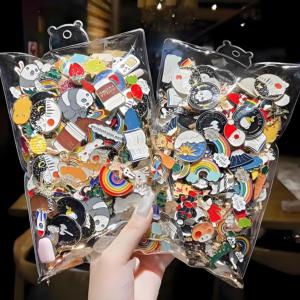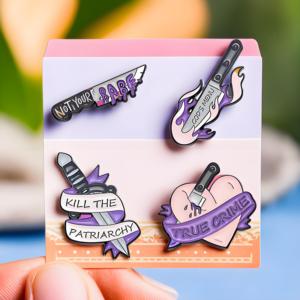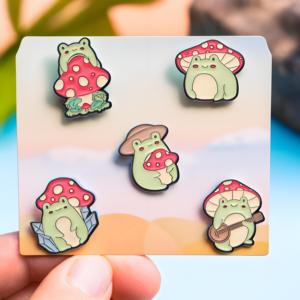(16944 products available)



































































































































































































A logo is a graphic mark, emblem, or symbol used to promote public recognition and identification of a brand, organization, or individual. There are several types of logos, each serving its purpose and conveying brand identity in a unique way. Here are some of the most common types of logos:
Wordmark or Logotype
A Wordmark, also known as a logotype, is a logo that consists of the brand name or company name written in a distinctive typographical style. These logos rely on unique fonts, colors, and spacing to create a memorable visual identity. Examples include Google, Coca-Cola, and Visa. Wordmarks are effective for brands with unique names that want to emphasize their identity through typography.
Lettermark or Monogram
Lettermarks, or monograms, are logos composed of the initials of a company or brand, usually stylized in a distinctive font. These logos are particularly useful for brands with long or complex names. Examples include IBM (International Business Machines), HBO (Home Box Office), and UPS (United Parcel Service). Lettermarks simplify brand recognition by focusing on a few key letters.
Icon or Symbol
Icons or symbols are logos that consist of a graphic image or symbol, often without text. These logos can be abstract or representative of the brand's values, products, or services. Examples include the Apple logo, Nike's swoosh, and the Twitter bird. Icons are effective for creating a strong visual association with a brand, especially in a global market where language can be a barrier.
Combination Mark
Combination marks blend text and images, incorporating both words and symbols into the logo design. These logos offer the advantages of wordmarks and icons, making them versatile and easily recognizable. Examples include Adidas (which combines the brand name with a distinctive symbol), Burger King, and Dropbox. Combination marks are particularly useful for new brands as they help establish both visual and textual identity.
Emblem
An emblem is a logo that consists of text integrated within a symbol or icon. Emblems often have a traditional or classic feel and are used by brands that want to convey a sense of heritage or authority. Examples include the Harley-Davidson logo, Starbucks coffee, and the NFL (National Football League) logo. Emblems are effective for creating a sense of trust and reliability.
Abstract Logo Marks
Abstract logo marks are logos that use geometric shapes or forms that do not represent anything recognizable but convey a unique brand identity. These logos can be highly stylized and creative, allowing for a distinct and memorable brand image. Examples include the Pepsi logo, the Olympic rings, and the Mastercard logo. Abstract logo marks are effective for brands that want to stand out and create a unique visual language.
Logo design is a complex process that involves several key steps and considerations. Firstly, it's essential to understand the brand's identity, values, and target audience. This understanding forms the foundation for creating a logo that resonates with its intended viewers. Next, designers often start with brainstorming and sketching ideas, exploring different concepts and forms that represent the brand. This stage is about creativity and experimentation, where no idea is too far-fetched.
Once several concepts are developed, they are refined and digitized using graphic design software. This process involves selecting appropriate colors, typography, and shapes that align with the brand's identity. Color psychology plays a crucial role here, as different colors evoke different emotions and associations. For instance, blue often conveys trust and professionalism, while red can evoke passion and energy.
Another critical aspect of logo design is simplicity and versatility. A good logo should be simple enough to be easily recognized and remembered but distinctive enough to stand out. It should also be versatile, working across different mediums and sizes, from business cards to billboards. This versatility ensures that the logo maintains its integrity and impact, regardless of where it's used.
Finally, feedback and iteration are vital in the logo design process. Designers often seek input from stakeholders and potential users, using this feedback to make necessary adjustments and improvements. This collaborative process helps ensure the final logo effectively communicates the brand's identity and resonates with its audience.
Wearing a logo design on one's clothes or accessories is a common fashion choice that can be both stylish and personal. To achieve this, one can start by selecting a clothing item or accessory that features the desired logo. This could be a t-shirt, hoodie, cap, or bag. Once the item is selected, it's important to consider the overall outfit. Logo apparel tends to be a statement piece, so it's best paired with more subtle and neutral items to balance the look. For instance, a logo t-shirt can be paired with plain jeans or chinos and a pair of classic sneakers. This keeps the focus on the logo without overwhelming the outfit.
For a more casual and streetwear-inspired look, a logo hoodie or sweatshirt can be paired with distressed jeans or joggers. Adding a pair of sunglasses and a watch can elevate the look further. When wearing a logo cap, it’s best to keep the rest of the outfit casual. A simple t-shirt, denim jacket, and jeans combination works well. Bags with logos, such as tote bags or backpacks, can be matched with a minimalist outfit to avoid clashing. A plain, monochrome outfit often complements a logo bag well, allowing the logo to stand out as a focal point.
Matching a logo to an outfit requires a keen eye for balance and style. Start by considering the logo's design, colors, and overall vibe. Is it bold and modern, or classic and understated? This will guide your choices. For casual looks, logo t-shirts or hoodies pair well with jeans or chinos. Opt for neutral colors like black, white, or gray for versatility. If the logo is colorful, choose one of the logo colors for your bottom wear or accessories to create a cohesive look.
For a sporty appearance, combine a logo cap with a matching tracksuit or casual wear. Choose caps with logos that complement the rest of your outfit. For instance, a baseball cap with a sporty logo can be paired with sneakers and athletic wear. In formal settings, subtle logos on ties, cufflinks, or pocket squares can add a touch of class. Match the colors of these accessories with your shirt or suit for a polished appearance. Remember, the key is to let the logo enhance your outfit without overpowering it. Balance is crucial; if your outfit features a prominent logo, keep other elements more subdued to maintain harmony.
Q1: What are the most common colors used for custom logo patches?
A1: Logo patches can be produced in almost any color, with some colors being more common than others. Red, blue, black, and white are among the most frequently used colors. These colors are popular because they stand out and are easily identifiable. However, the choice of color depends on the brand's identity and the message it wants to convey. Some brands may opt for specific colors that align with their branding or to evoke certain emotions.
Q2: How are logo patches attached to clothing?
A2: Custom logo patches can be attached to clothing in several ways. They can be sewn on, ironed on, or attached with Velcro or snaps. Sewing is the most durable method and is recommended for patches that will be washed frequently. Iron-on patches are convenient and easy to apply, suitable for quick fixes or temporary placements. Velcro patches are versatile and can be removed and replaced easily, making them ideal for uniforms or promotional purposes.
Q3: Can logo patches be made in different shapes and sizes?
A3: Yes, custom logo patches can be made in various shapes and sizes to suit the brand's needs. Whether it's a simple rectangular patch or a more complex shape like a logo or mascot, manufacturers can create patches that fit the desired design. The size of the patch can also be customized, from small labels to large statement patches. This flexibility allows brands to create patches that effectively represent their identity.
Q4: Are custom logo patches suitable for all types of fabric?
A4: Yes, custom logo patches can be applied to various types of fabric, including cotton, polyester, denim, and leather. However, some attachment methods may be more suitable for certain fabrics. For example, leather may require sewing or snaps, while cotton and polyester can work well with iron-on or Velcro methods. It's essential to consider the fabric type and choose an application method that ensures the patch adheres securely and maintains its appearance.